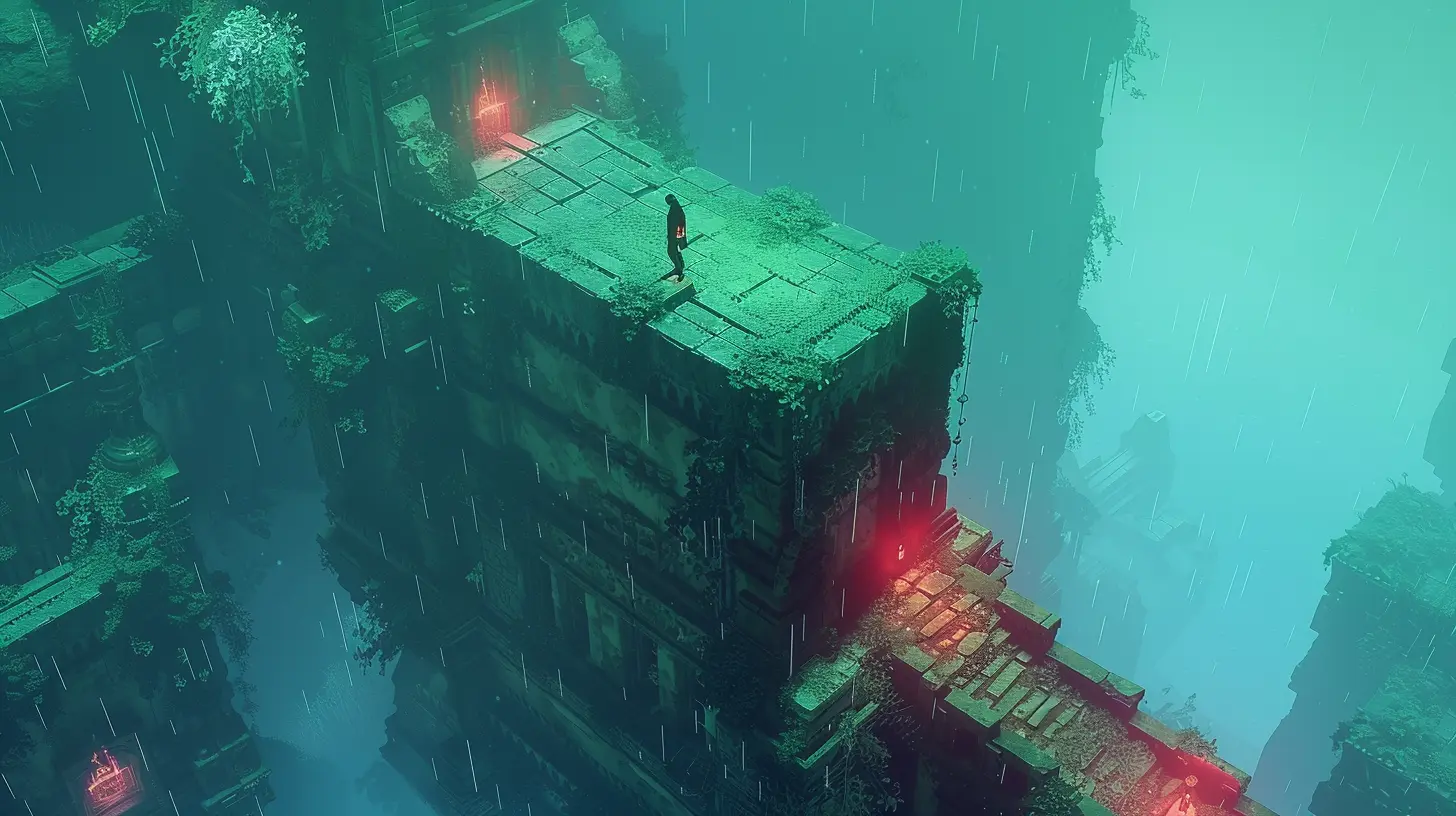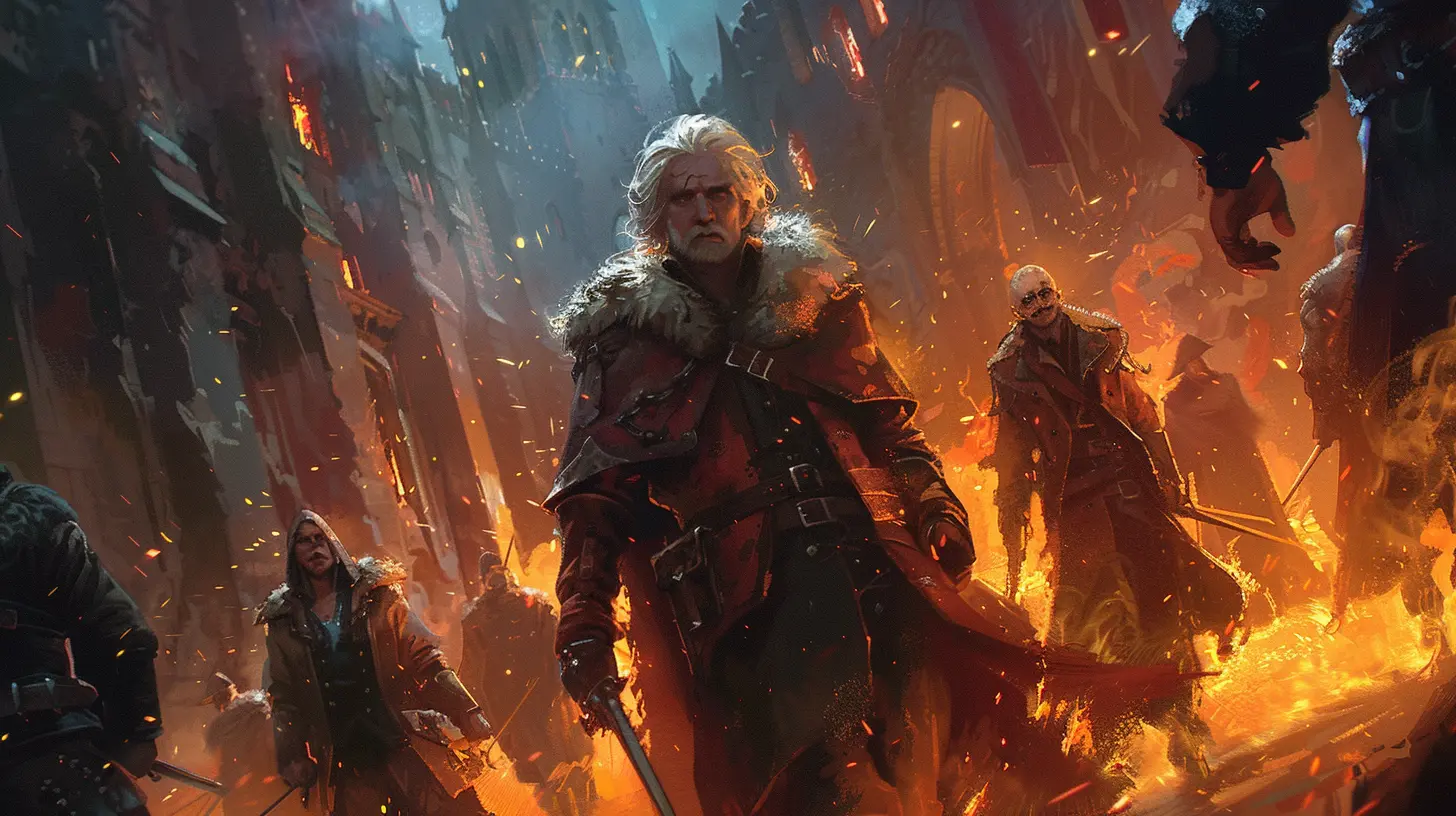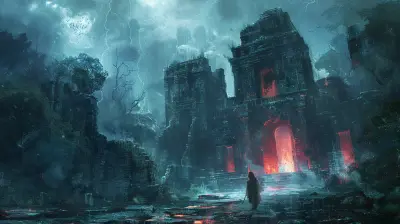The Rise of Rogue-Lite Indie Games and Why They’re Addictive
6 September 2025
Let’s be real—indie games are having their moment in the sun. For years, they’ve been the scrappy underdogs of the gaming world, proving that you don’t need a AAA budget to create memorable gaming experiences. But there’s one particular genre that’s captured the collective imagination of gamers everywhere: rogue-lite games. You’ve probably heard of “Hades,” “Dead Cells,” or “Slay the Spire.” These games are like digital potato chips—once you start, you can’t stop. So, why are rogue-lites so dang addictive? And how did they rise to take over the indie gaming scene? Let’s dive in.
What Exactly Is a Rogue-Lite?
Before we get too cozy, let’s clarify something: What even is a rogue-lite? Is it the same as a rogue-like? Not quite. The two terms get thrown around a lot, but there’s a subtle difference. Think of it like pizza toppings: Rogue-likes are the anchovies—purists love them, but they’re not for everyone. Rogue-lites, on the other hand, are like pepperoni—similar DNA but way more universally loved.Rogue-lites are games that take inspiration from classic rogue-likes (think: procedurally generated levels, permadeath, etc.) but with some modern quality-of-life tweaks. Unlike rogue-likes, rogue-lites often let you carry over upgrades or progress after a run. The cycle of dying, learning, and improving is baked into their design, creating a gameplay loop that’s as satisfying as popping bubble wrap.
A Quick History Lesson (Don’t Worry, It’s Fun)
Rogue-lite games owe their existence to the OG rogue-like, "Rogue" (creative name, huh?), which debuted all the way back in 1980. It was a dungeon crawler with permadeath, random levels, and minimal graphics—but gamers back then loved it. Fast forward a few decades, and developers started reimagining those same mechanics for modern audiences.Enter games like "The Binding of Isaac" and "FTL: Faster Than Light" in the early 2010s. These trailblazers were quirky, challenging, and most importantly, fun as heck. They took the best parts of rogue-likes (permadeath and randomization) but stripped away some of the frustration, making the genre more accessible. And, boom, the rogue-lite renaissance began. Today, it’s hard to scroll through Steam without finding at least 20 new indie rogue-lites.
Why Are Rogue-Lites So Addictive?
Okay, now we’re getting to the juicy stuff. Why do people sink hundreds of hours into these games? Why do you (yes, you!) keep saying, “Just one more run,” at 2 a.m.? Let’s break it down.1. The Sweet, Sweet Progression Loop
Humans love progress—it’s in our DNA. Whether it’s leveling up in an RPG, checking off tasks on a to-do list, or watching plants grow (hey, no judgment), there’s something deeply satisfying about moving forward. Rogue-lites capitalize on this by giving you tangible progress with every run. Even if you fail miserably (which, let’s be honest, happens a lot), you still unlock new weapons, skills, or characters. It’s like being rewarded for failing—what’s not to love?And because you’re constantly unlocking new tools, every run feels fresh. That sword you got on Run #5? Now it’s a game-changer on Run #10. The progression is like a breadcrumb trail, luring you deeper and deeper into the game.
2. They’re (Weirdly) Stress-Free… Kinda
Here’s a wild paradox: Rogue-lites are challenging, yet they’re also a stress reliever. How? Because failure is baked into the experience. Unlike other genres where death can feel punishing (looking at you, Soulsborne games), rogue-lites treat failure as just another step forward. Didn’t beat the boss? Cool, here’s some currency. Died to a random enemy? No biggie, now you know their attack patterns.This low-key approach to failure makes rogue-lites oddly relaxing. You’re not expected to master the game instantly. You’re just expected to keep trying. It’s like life, but with cooler soundtracks.
3. Randomness = Endless Fun
Remember how exciting it was to open loot boxes in games (before the microtransaction plague ruined everything)? Rogue-lites harness that same feeling with their procedurally generated levels and randomized loot. No two runs are the same, which keeps things fresh even after 50 hours. It’s like rolling dice in a game of Dungeons & Dragons—you never know what you’re going to get. Sometimes the game blesses you; sometimes it curses you. Either way, you’re hooked.4. Bite-Sized Gameplay
Got 20 minutes to kill? Perfect, you can fit in a quick rogue-lite run. Unlike sprawling RPGs that demand hours of commitment, rogue-lites deliver satisfying gameplay in short bursts. But here’s the twist: those "short bursts" often turn into extended play sessions because you just can’t stop. It’s a slippery slope, kind of like telling yourself, “Just one more episode” on Netflix… and suddenly it’s 3 a.m.
Rogue-Lites and Indie Devs: A Match Made in Gaming Heaven
Now let’s talk about why indie developers are absolutely crushing it with rogue-lites. First off, the genre’s core mechanics—randomization, permadeath, and short gameplay loops—are perfect for small teams. Procedurally generated levels, for example, save devs time because they don’t have to handcraft every single dungeon. Essentially, rogue-lites let indie devs focus on creativity rather than scope.And boy, do indie devs get creative. Whether it’s the Greek mythology-inspired chaos of “Hades” or the dark humor of “The Binding of Isaac,” rogue-lites often have a quirky charm that big-budget games just can’t replicate. Plus, indie studios aren’t afraid to experiment with wacky ideas. A deck-building dungeon crawler? Sure! A bullet-hell farming sim? Why not?
With a lower barrier to entry, rogue-lites also give indie devs a chance to stand out in a crowded market. It’s no wonder so many of the genre’s greatest hits come from small studios.
The Role of Community and Streamers
Let’s not overlook the power of community in the rise of rogue-lites. These games are a blast to play, but they’re also incredibly fun to watch. Popular Twitch streamers and YouTubers have played a massive role in hyping up rogue-lites, turning games like “Hades” and “Slay the Spire” into household names. Watching someone else struggle through a brutal boss fight? Pure entertainment.Beyond that, rogue-lites often encourage fan interaction. Games like “Dead Cells” and “Enter the Gungeon” have passionate communities that share tips, tricks, and strategies. It’s like a secret club, but everyone’s invited.
The Future of Rogue-Lites: Where Do We Go from Here?
Rogue-lites aren’t going anywhere. If anything, they’re evolving. Just look at the recent surge of hybrid rogue-lites—games that mix rogue-lite mechanics with other genres. “Vampire Survivors” mashes up bullet-hell chaos with simple progression mechanics, while “Rogue Legacy 2” doubles down on its family-themed storytelling. Developers are constantly pushing the boundaries of what a rogue-lite can be.As the genre grows, we’re likely to see even more innovation. Maybe a rogue-lite dating sim. Or a rogue-lite rhythm game. Who knows? The possibilities are endless, and honestly, that’s part of the fun.
Final Thoughts
At the end of the day, the rise of rogue-lite indie games comes down to one simple fact: They’re ridiculously fun. They balance challenge and reward in a way that feels fresh and exciting, even after dozens of hours. Whether you’re a hardcore gamer or a casual player, rogue-lites have something to offer everyone. And considering the genre’s booming popularity, it’s safe to say we’ll be dying, restarting, and dying again for years to come.So, next time you’re tempted to say, “Just one more run,” don’t fight it. Embrace the chaos. After all, that’s what rogue-lites are all about.
all images in this post were generated using AI tools
Category:
Indie GamesAuthor:

Tina Fisher
Discussion
rate this article
1 comments
Vaughn Baker
Great article! It's fascinating to see how rogue-lite indie games are captivating players with their unique mechanics and replayability. They truly bring endless excitement and fun to the gaming scene!
September 12, 2025 at 3:27 AM

Tina Fisher
Thank you! I'm glad you enjoyed the article. Rogue-lite indie games really do offer a fresh and exciting twist that keeps players coming back for more!


